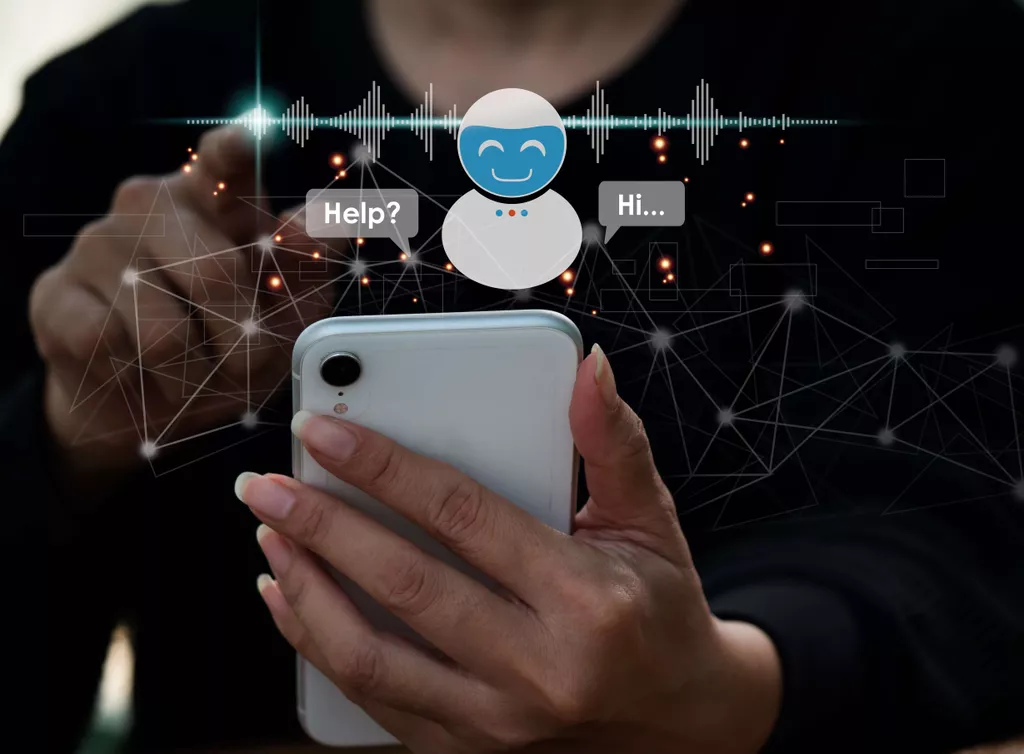Pattern Recognition Working, Types, and Applications
When the algorithm detects areas of interest, these are then surrounded by bounding boxes and cropped, before being analyzed to be classified within the proper category. SVM models use a set of techniques in order to create an algorithm that will determine whether an image corresponds to the target object or if it does not. From the dataset it was set with, the SVM model is trained to separate a hyper plan into several categories.
What algorithm is used in image recognition?
The leading architecture used for image recognition and detection tasks is that of convolutional neural networks (CNNs). Convolutional neural networks consist of several layers, each of them perceiving small parts of an image.
Contact us and we’ll help you see — and pursue — all the possibilities. This layer reduces complexity/dimensionality in the visual representation — the number of parameters in the input — so some information is lost. This downsampling layer improves efficiency and limits the risk of overfitting. This refinement process can be repeated for dozens, hundreds, or even thousands of layers, making the image progressively better and more detailed.
Demystifying Artificial Inelegance: Making Complex Technology Accessible for Everyone
It provides the ability to configure each layer separately with minimum dependency on each other. All of these, and more, make image recognition an important part of AI development. So, let’s dive into how it has evolved, and what its significance is today. The CNN helps divide the image into however many layers necessary to fully “see” the image. These layers can be predetermined in a variety of ways, but they’re typically separated by the planes of colors, like RGB or CMYK. Boundaries between online and offline shopping have disappeared since visual search entered the game.
Which algorithm is used for image recognition?
Some of the algorithms used in image recognition (Object Recognition, Face Recognition) are SIFT (Scale-invariant Feature Transform), SURF (Speeded Up Robust Features), PCA (Principal Component Analysis), and LDA (Linear Discriminant Analysis).
It is susceptible to variations of image and provides results with higher precision compared to traditional neural networks. Lawrence Roberts is referred to as the real founder of image recognition or computer vision applications as we know them today. In his 1963 doctoral thesis entitled “Machine perception of three-dimensional solids”Lawrence describes the process of deriving 3D information about objects from 2D photographs. The initial intention of the program he developed was to convert 2D photographs into line drawings. These line drawings would then be used to build 3D representations, leaving out the non-visible lines.
Applications in surveillance and security
Today lots of visual data have been accumulated and recorded in digital images, videos, and 3D data. The goal is to efficiently and cost-effectively optimize and capitalize on it. Self-driving cars from Volvo, Audi, Tesla, and BMW use cameras, lidar, radar, and ultrasonic sensors to capture images of the environment. In addition, AI is already being used to identify objects on the road, including other vehicles, sharp curves, people, footpaths, and moving objects in general.
- SVM models use a set of techniques in order to create an algorithm that will determine whether an image corresponds to the target object or if it does not.
- As AI technology continues to evolve, it is likely that stable diffusion AI will become an even more important tool for image recognition.
- These algorithms process the image and extract features, such as edges, textures, and shapes, which are then used to identify the object or feature.
- In the first year of the competition, the overall error rate of the participants was at least 25%.
- After the completion of the training process, the system performance on test data is validated.
- Therefore, an AI-based image recognition software should be capable of decoding images and be able to do predictive analysis.
But OCR doesn’t have any sort of intelligence built in to interpret the data. Today, the production and manufacturing sector is the most common user of image recognition software. The use of human eyes is necessary for many inspections in this industry, including quality control. At Jelvix, we develop complete, modular image recognition solutions for organizations seeking to extract useful information and value from their visual data. They are flexible in deployment and use existing on-premises infrastructure or cloud interfaces to automatically discover, identify, analyze, and visually interpret data.
Image Recognition AI used in visual search
A facial recognition model will enable recognition by age, gender, and ethnicity. Based on the number of characteristics assigned to an object (at the stage of labeling data), the system will come up with the list of most relevant accounts. Image recognition technology is only as good as the image analysis software that provides the results. InData Labs offers proven solutions to help you hit your business targets.
These elements will allow it to be more efficient when analyzing future data. This will create a sort of data library that will then be used by the Neural Network to distinguish the various objects. It works with a set of various algorithms also inspired by the way the brain functions. If we want the image recognition model to analyze and categorize different races of dogs, the model will need to have a database of the various races in order to recognize them. A fully connected layer is the basic layer found in traditional artificial neural networks (i.e., multi-layer perceptron models). Each node in the fully connected layer multiplies each input by a learnable weight, and outputs the sum of the nodes added to a learnable bias before applying an activation function.
Programming Image Recognition
It’s also how Apple’s Face ID can tell whether a face its camera is looking at is yours. Basically, whenever a machine processes raw visual input – such as a JPEG file or a camera feed – it’s using computer vision to understand what it’s seeing. It’s easiest to think of computer vision as the part of the human brain that processes the information received by the eyes – not the eyes themselves. In order for a machine to actually view the world like people or animals do, it relies on computer vision and image recognition. We have learned how image recognition works and classified different images of animals.

This knowledge is then applied to new images for predictions and tasks. The leading architecture used for image recognition and detection tasks is that of convolutional neural networks (CNNs). Convolutional neural networks consist of several layers, each of them perceiving small parts of an image. The neural network learns about the visual characteristics of each image class and eventually learns how to recognize them. While animal and human brains recognize objects with ease, computers have difficulty with this task.
What Is Image Recognition?
This accurate organization of a number of labeled products allows finding what a user needs effectively and quickly. Thanks to the super-charged AI, the effectiveness of the tags implementation can keep getting higher, while automated product tagging per se has the power to minimize human effort and reduce error rates. Just like with other Machine Learning methods, the machine learns on its own with minimal interference from humans. This means that when you see the final output of the generated images, it likely isn’t the only grouping of images.
- A third convolutional layer with 128 kernels of size 4×4, dropout with a probability of 0.5.
- Image recognition is highly used to identify the quality of the final product to decrease the defects.
- The picture to be scanned is “sliced” into pixel blocks that are then compared against the appropriate filters where similarities are detected.
- Image recognition algorithms use deep learning and neural networks to process digital images and recognize patterns and features in the images.
- However, neural networks can be very resource-intensive, so they may not be practical for real-time applications.
- With the advent of machine learning (ML) technology, some tedious, repetitive tasks have been driven out of the development process.
Computer vision has significantly expanded the possibilities of flaw detection in the industry, bringing it to a new, higher level. Now technology allows you to control the quality after the product’s manufacture and directly in the production process. The thing is, medical images often contain fine details that CV systems can recognize with a high degree of certainty. Image segmentation may include separating foreground from background or clustering regions of pixels based on color or shape similarity.
A Data Set Is Gathered
It is often hard to interpret a specific layer role in the final prediction but research has made progress on it. We can for example interpret that a layer analyzes colors, another one shapes, a next one textures of the objects, etc. At the end of the process, it is the superposition of all layers that makes a prediction possible. To do so, it metadialog.com is necessary to propose images that were not part of the training phase. Based on whether or not the program has been able to identify all the items and on the accuracy of classification, the model will be approved or not. The goal of image recognition is to identify, label and classify objects which are detected into different categories.

AlexNet [38] is the first deep architecture introduced by Geoffrey Hinton and his colleagues. The VGG network [39] was introduced by the researchers at Visual Graphics Group at Oxford. GoogleNet [40] is a class of architecture designed by researchers at Google.
Everything You Need to Know About In-Vehicle Infotainment Systems
The Trendskout AI software executes thousands of combinations of algorithms in the backend. Depending on the number of frames and objects to be processed, this search can take from a few hours to days. As soon as the best-performing model has been compiled, the administrator is notified. Together with this model, a number of metrics are presented that reflect the accuracy and overall quality of the constructed model. From 1999 onwards, more and more researchers started to abandon the path that Marr had taken with his research and the attempts to reconstruct objects using 3D models were discontinued. Efforts began to be directed towards feature-based object recognition, a kind of image recognition.
These highly accurate keywords improve product discoverability within our store. If we look back at the pants above, the image detection engine determined they were khaki-colored. This process created highly accurate and relevant keywords that Shopify uses for search. Let’s apply this image recognition power to the products in our Shopify store. With this technology, we can convert the results into relevant product tags.
6 Best Image Recognition APIs – Startup.info
6 Best Image Recognition APIs.
Posted: Mon, 14 Nov 2022 08:00:00 GMT [source]
How does machine learning recognize images?
Machines don't have a look at the whole image; they are only interested in pixel values and patterns in these values. They simply take pixel patterns of an item and compare them with other patterns.

Seems a little quiet over here
Be the first to comment on this post
Write a response